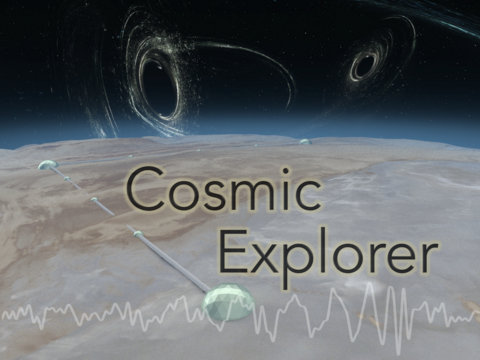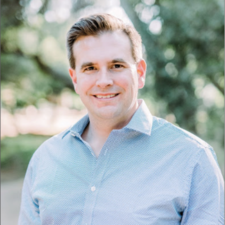Completed in 2002, the Laser Interferometer Gravitational-wave Observatory, or LIGO, uses high-power laser beams over a 4-kilometer distance to measure passing gravitational waves — ripples in space that travel at the speed of light — generated by the collisions of distant black holes and neutron stars. Enter now Cosmic Explorer, the United States’ next-generation gravitational wave observatory.
Jonathan Richardson, an assistant professor of physics and astronomy, will lead the design of an adaptive optical sensing and controls system critical to enabling Cosmic Explorer. He has just received a three-year grant of more than $283,000 from the National Science Foundation to support this research.
Cosmic Explorer is expected to push the reach of gravitational-wave astronomy to the edge of the observable universe, enabling discoveries across physics, astronomy, and cosmology by observing black holes and neutron stars across cosmic time.
“This observatory will probe the nature of the most extreme matter in the universe and explore questions in gravity and fundamental physics,” Richardson said. “The plan for Cosmic Explorer is to build one or possibly two sites that are 40 kilometers long — 10 times the size of LIGO. The goal is to build a detector that is 10 times more sensitive than LIGO is right now, allowing us to observe a bigger volume of the universe for gravitational waves.”
Richardson explained that Cosmic Explorer will have a “deeper view” of the universe than LIGO, being capable of looking back into the history of the universe before the first stars formed.
“The success of Cosmic Explorer will reshape the field of gravitational-wave astrophysics,” he said. “The funding will enable laser interferometry at the megawatt scale. Cosmic Explorer will require much higher circulating laser power — 1.5 megawatts — than has ever been demonstrated in a large interferometer.”

An interferometer uses the interference of two beams of light to make precise measurements. Richardson’s team has been funded for the conceptual design work for one of four critical subsystems that will make up the interferometer. New technology will be required for this system, which will use higher levels of “squeezed states of light” — engineered quantum states of light — and more laser power in arm cavities that make up the interferometer.
“The final deliverable is the conceptual design of an entire system for this very sensitive new detector,” Richardson said. “If the detector can reach this challenging sensitivity target, we will be able to do the observational science that Cosmic Explorer promises to deliver.”
Richardson’s proposal is one of four coordinated proposals funded by the National Science Foundation this year to carry out different aspects of the conceptual design work for Cosmic Explorer. One of the proposals is for site selection. According to Richardson, Cosmic Explorer sites will not be determined for a few more years. The immediate goal, he said, is to produce the conceptual design for the observatory within the next five years.
“UCR will be doing a key part of the design work,” said Richardson, who joined UCR in 2021 after a Caltech postdoctoral appointment in which he worked in the LIGO lab. “This $2 billion-scale experiment will likely be a flagship science experiment done in the United States in the next 15 years, taking us through the 2030s.”
The grant to Richardson will support one postdoctoral researcher, up to two graduate students, and may involve the participation of several undergraduate students at UCR. Richardson will collaborate on the project with Syracuse University, which has also received funding from the National Science Foundation.
AUTHOR:IQBAL PITTALWALA
September 1, 2023
